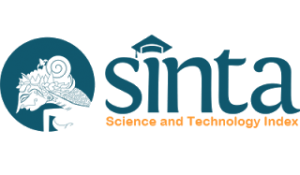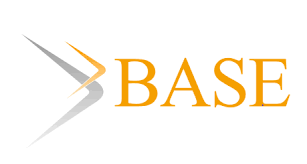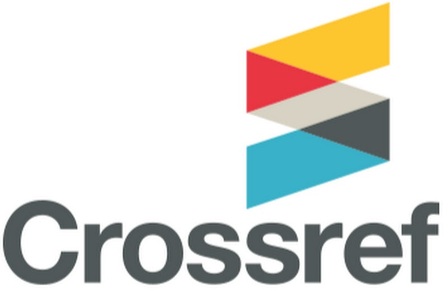A RELATIONAL PERSPECTIVE ON TURNOVER: EXAMINING AFFECTIVE, CONTINUANCE, AND NORMATIVE PREDICTORS
(1)
(2)
(3)
(4) Bina Nusantara University
(*) Corresponding Author
Abstract
Keywords
Full Text:
PDFReferences
Allen, N. J. & Meyer, J. P. (1990). The Measurement and Antecedents of Affective, Continuance and Normative Commitment to the Organization. Journal of Occupational Psychology, 63(1), 1-18.
Cho, S., Johanson, M. M., & Guchait, P. (2009). Employees’ intent to leave: A comparison of determinants of intent to leave versus intent to stay. International Journal of Hospitality Management, 28(3), 374-381.
Egan, T. M., Yang, B., & Bartlett, K. R. (2004). The effects of organizational learning culture and job satisfaction on motivation to transfer learning and turnover intention. Human Resource Development Quarterly, 15(3), 279–301
Hair, J. F., Black, W. C., Babin, B. J., & Anderson, R. E. (2010). Multivariate Data Analysis: A Global Perspective. New Jersey: Pearson.
Harrie, G. (2002). Career Development Interventions in the 21st Century. Fifth Edition Columbus, OH: Merrill Prentice Hall.
Harun, H., Salleh, R., Memon, M. A., Baharom, M.N., & Abdullah, A. (2014). Job Satisfaction, Organizational Commitment and Stress among Offshore Oil and Gas Platform Employees. Asian Social Science, 10(11), 28-32.
International Labour Organization (2016). Indonesia Labour Market Outlook (August 2016). Retrieved from https://www.ilo.org/wcmsp5/groups/public/---asia/---ro-bangkok/---ilo-jakarta/documents/publication/wcms_513719.pdf
Jang, J. & George, R.T. (2012), Understanding the influence of polychronicity on job satisfaction and turnover intention: A study of non-supervisory hotel employees. International Journal of Hospitality Management, 31(2), 588-595.
Kalidass, A. & Bahron, A. (2015). The Relationship between Perceived Supervisor Support, Perceived Organizational Support, Organizational Commitment and Employee Turnover Intention. International Journal of Business Administration, 6(5), 82-89.
Levy, P.L. (2003). Industrial/organizational psychology: Understanding the workplace. Houghton Mifflin Company, Boston.
Luthans, F. (2008). Organizational Behavior. Boston: McGraw-Hill.
Mardiana, R., Guntur, Y., Haerani, S. & Hasan, M. (2012). The influence of affective, continuance and normative commitments on the turnover intentions of nurses at Makassar’s private hospitals in Indonesia. African Journal of Business Management, 6(38), 10303-10311.
Mehmood, N., Ahmad, U.N.U., Irum, S. & Ashfaq, M. (2016). Job Satisfaction, Affective Commitment, and Turnover Intentions among Front Desk Staff: Evidence from Pakistan. International Review of Management and Marketing, 6(S4) 305-309.
Mensah, R. & Kosi, I. (2016). Organizational Commitment and Turnover Intentions of Clinical Laboratory Scientists in Ghana. European Journal of Business and Management, 8(2), 164-172.
Meyer, J. P., Allen, N. J., & Smith, C. A. (1993). Commitment to organizations and occupations: Extension and test of a three-component conceptualization. Journal of Applied Psychology, 78(4), 538-551
Meyer, J. P., Stanley, D. J., Herscovitch, L., Topolnytsky, L. (2002) Affective, continuance, and normative commitment to the organization: a meta-analysis of antecedents, correlates, and consequences. Journal of Vocational Behavior, 61(1), 20-52
Mitchell, T. R., Holtom, B. C., & Lee, T. W. (2001). How to keep your best employees: Developing an effective retention policy. The Academy of Management Executive, 15(4), 96-108.
Mobley, W.H., Horner, S.O. & Hollinsworth, A.T. (1978). An evaluation of precursors of hospital employee turnover. Journal of Applied Psychology, 63(4), 408-14.
Nawab, S. Bhatti, K, K. (2011). Influence of Employee Compensation on Organizational Commitment and Job Satisfaction: A Case Study of Educational Sector of Pakistan. International Journal of Business and Social Science, 2(8), 25-35.
Perryer, C., Jordan, C., Firns, I., & Travaglione, A. (2010). Predicting turnover intentions. Management Research Review, 33(9), 911-923.
Prahadi, Y.Y. (2015). Turnover Talent Tinggi, Ini Dia Pemicunya. Retrieved from https://swa.co.id/swa/trends/management/turnover-talent-tinggi-ini-dia-pemicunya-survei
Robbins, S. & Judge, T.A. (2007). Organizational Behavior. 12th ed. Upper Saddle River, New Jersey: Prentice-Hall.
Saporna, G. C. and Claveria, R. A. (2013). Exploring the Satisfaction, Commitment and Turnover Intentions of Employees in Low Cost Hotels in Or. Mindoro, Philippines. Journal of Tourism Research & Hospitality, 2(2), 1.
Tarigan, V. & Ariani, D.W. (2015). Empirical Study Relations Job Satisfaction, Organizational Commitment, and Turnover Intention. Advances in Management & Applied Economics, 5(2), 21-42.
Tnay, E., Othman, A.E.A, Siong, H.C. & Lim, S.L.O. (2013). The influences of job satisfaction and organizational commitment on turnover intention. Procedia - Social and Behavioral Sciences, 97(2013), 201-208.
DOI: https://doi.org/10.24123/jmb.v18i2.417
Article Metrics
Abstract view : 787 timesPDF - 180 times
Refbacks
Copyright (c) 2019 Journal of Management and Business

This work is licensed under a Creative Commons Attribution 4.0 International License.
This work is licensed under a Creative Commons Attribution 4.0 International License. ISSN: 1412-3789. e-ISSN: 2477-1783.
 |  |  |  |
 |  |  |  |







